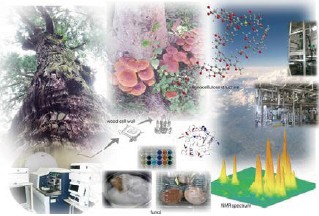ミッション 2: 太陽エネルギー変換・高度利用
Updated: 2025/11/17
太陽エネルギーを変換して高度利用するために、マイクロ波応用工学やバイオテクノロジー、化学反応などを活用して、太陽エネルギーを直接に電気・電波エネルギーや熱などに変換する研究を進めます。さらに、光合成による炭素固定化物であるバイオマスを介して、高機能な物質・材料に変換して有効利用する研究にも取り組みます。新ミッション2では、高機能物質への変換を重点化し、これを要素技術だけでなく全体システムにも展開します。
バイオマス高度利用のための生分解・化学変換研究
バイオマスを、機能性高分子や化学品、バイオ燃料などの有用物質に変換することをめざし、バイオマスの精密構造解析、リグニン分解性微生物の機能解析と応用、マイクロ波によるバイオマス変換システムの開発、バイオマス変換酵素や人工触媒の開発を研究しています。
宇宙太陽発電所のためのワイヤレス給電技術研究
太陽エネルギーをより安定して利用するために、宇宙空間で太陽光発電を行なう宇宙太陽発電所の実現をめざし、マイクロ波を用いたワイヤレス給電技術を研究しています。この技術は、携帯電話の無線充電や電池レスセンサー駆動などにも利用できます。ワイヤレス給電技術を、宇宙圏と人間生活圏とをつなぐ技術として研究を進めています。
バイオマス循環の基礎理解と応用展開
地球上で滞りなく循環するバイオマスの生合成と生分解とを正確に理解しようとしています。そのうえで、バイオマス由来の新材料およびバイオマスに着想を得た持続可能な技術開発をめざす研究を進めています。
機能性木質炭素の開発と分析電子顕微鏡による材料評価
バイオマスに炭素以外の元素をくわえて蒸し焼きにし、バイオマス系機能性炭素材料の作製をめざしています。さらに、分析電子顕微鏡法によって得られた評価をフィードバックして、機能性炭素材料の用途の開発を進めています。







